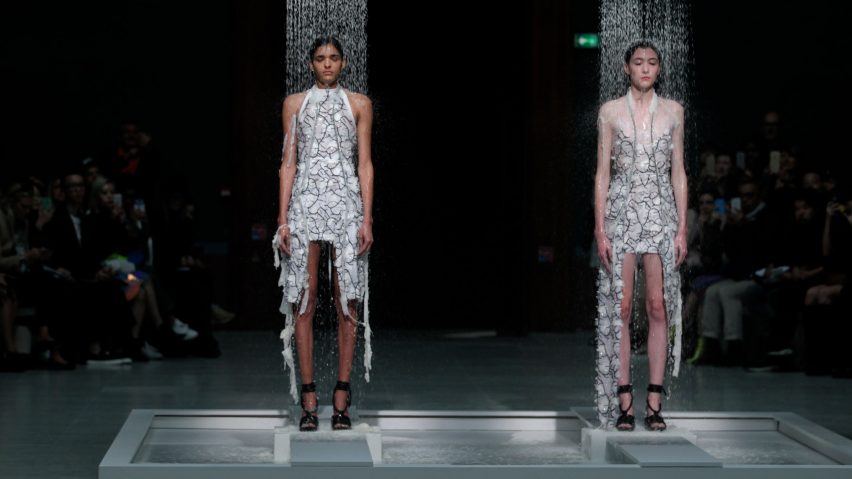
Ten unconventional dresses that reject fashion norms
After French label Coperni gained worldwide attention for its spray-on dress at Paris Fashion Week, Dezeen rounds up 10 experimental gowns with unexpected forms and materials.
Fashion designers are constantly seeking to push boundaries, and recent years have seen them shake up the way we dress more than ever before.
From gowns made live on the runway to garments meticulously engineered over hundreds of hours, here are 10 inventive dresses from the Dezeen archive:
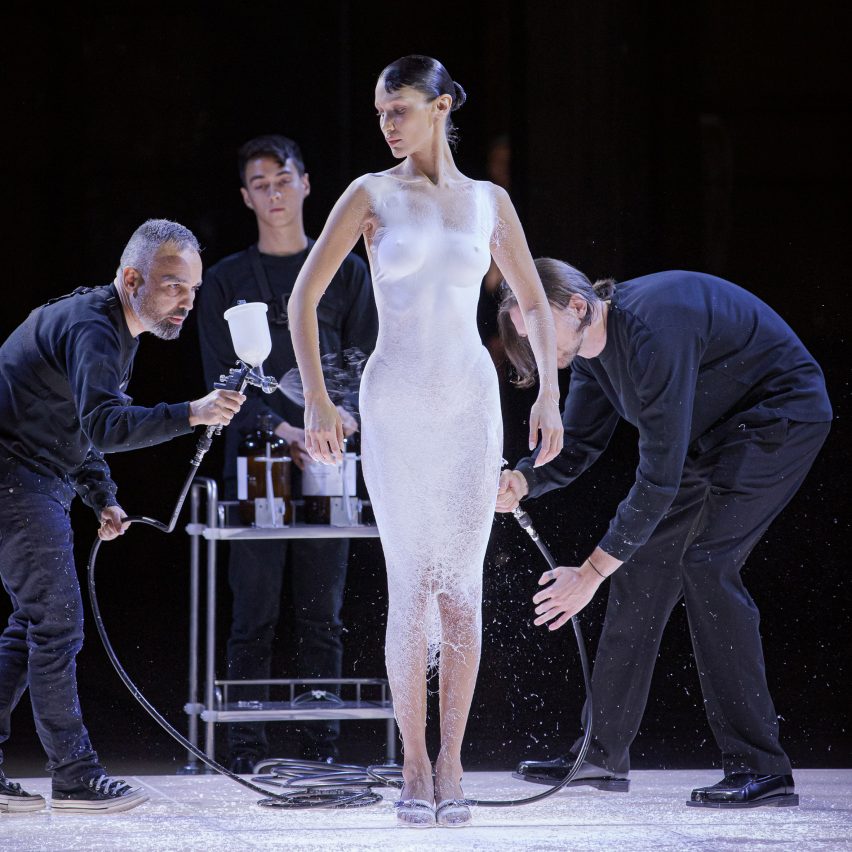
At this year's Paris Fashion Week, French brand Coperni created a dress in real-time using a sprayable liquid-fibre manufactured by fabric technology company Fabrican.
Over the course of 15 minutes, the fibre was sprayed onto the body of model Bella Hadid in the outline of a dress, before it transformed into a suede-like fabric over her skin.
The liquid fibre was developed by Fabrican using natural and synthetic fibres, and it is strong enough to create, customise and repair clothes that can be re-worn and washed.
Find out more about the Fabrican dress ›
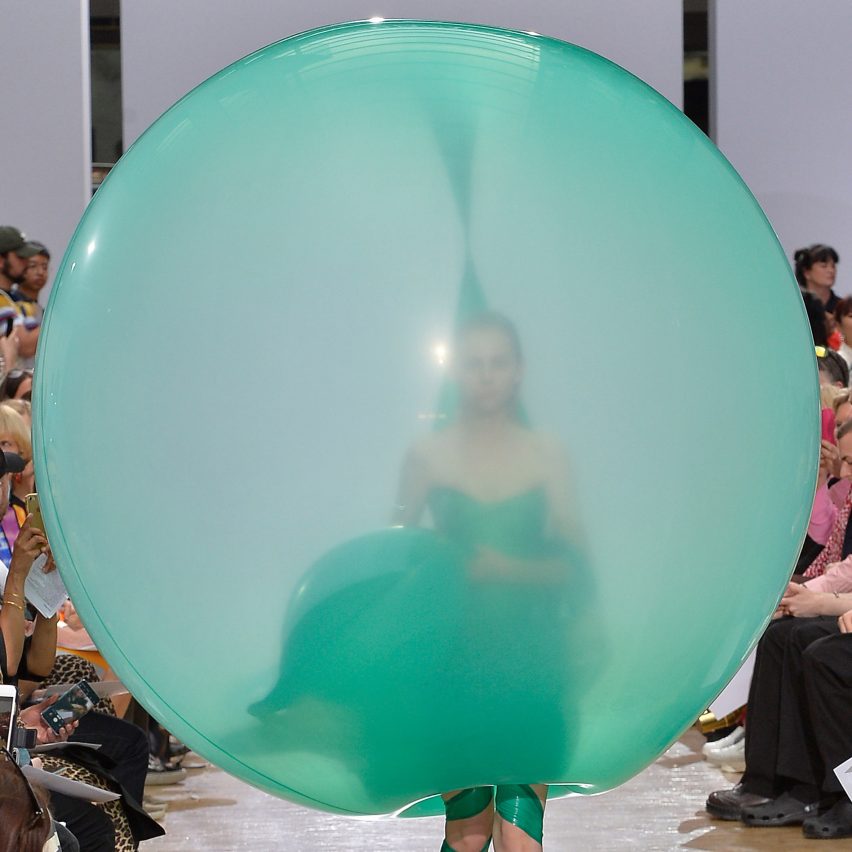
Balloon dresses by Fredrik Tjærandsen
Giant balloons were self-deflated by models from within to create the colourful rubber dresses in former Central Saint Martins student Fredrik Tjærandsen's graduate collection.
Presented in a series of colours and shapes, all of the outfits were made from rubber sourced from Sri Lankan suppliers that support and buy from local growers.
Find out more about the balloon dresses ›
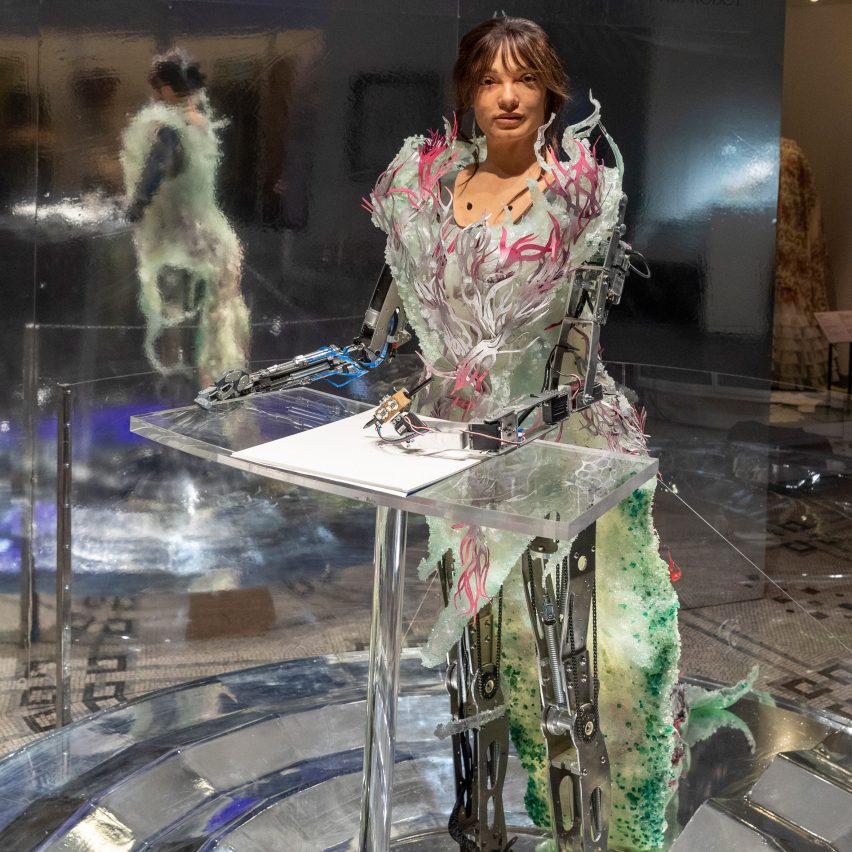
This sleeveless gown was tailored to fit the artificial intelligence (AI) robot Ai-Da and crafted by the fashion brand Auroboros from a mix of salt, recycled glass beads and plastic.
On its upper layer, a salt solution was applied and left to oxidise, leaving behind uniquely coloured and shaped crystals, which eventually fell off the dress like petals on a flower.
According to the dress's designers, it was intended to illustrate that "the process of growth is fleeting, reminding us to cherish the beauty of the burgeoning life before its eventual end".
Find out more about Biomimicry ›
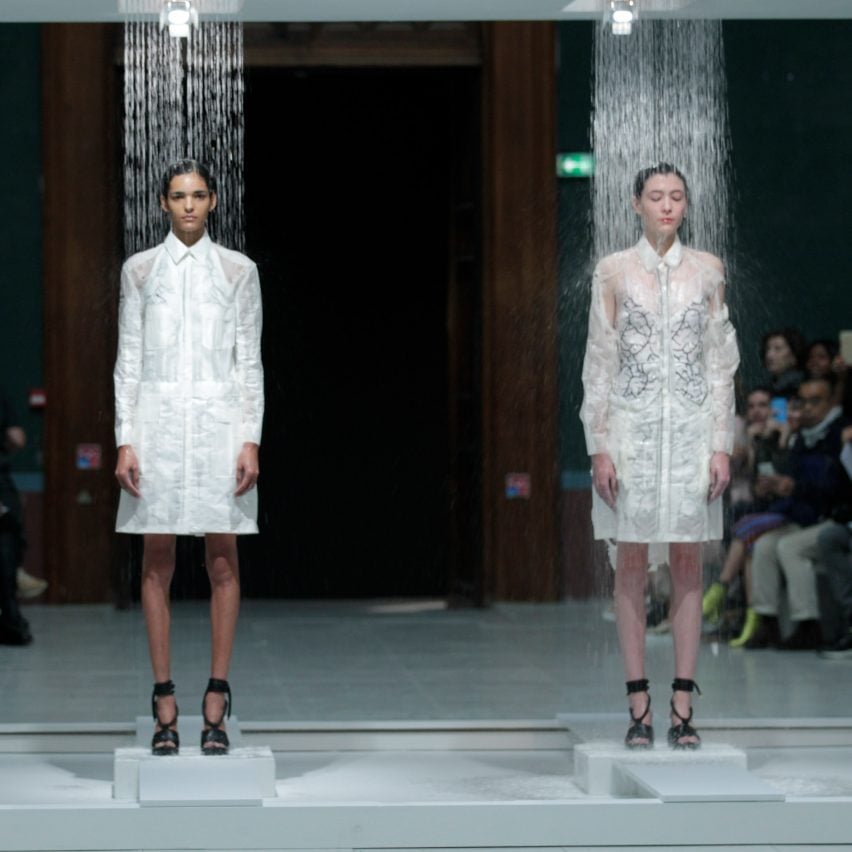
Dissolvable dresses by Hussein Chalayan
Soluble white fabrics were used to unexpectedly reveal dresses with intricate stitching and appliqués at Hussein Chalayan's experimental Paris Fashion Week show in 2015.
A pair of models entered the runway wearing pared-back white dresses, before stepping beneath two showers that caused the outfits to dissolve, exposing the final pieces.
Find out more about the dissolvable dresses ›
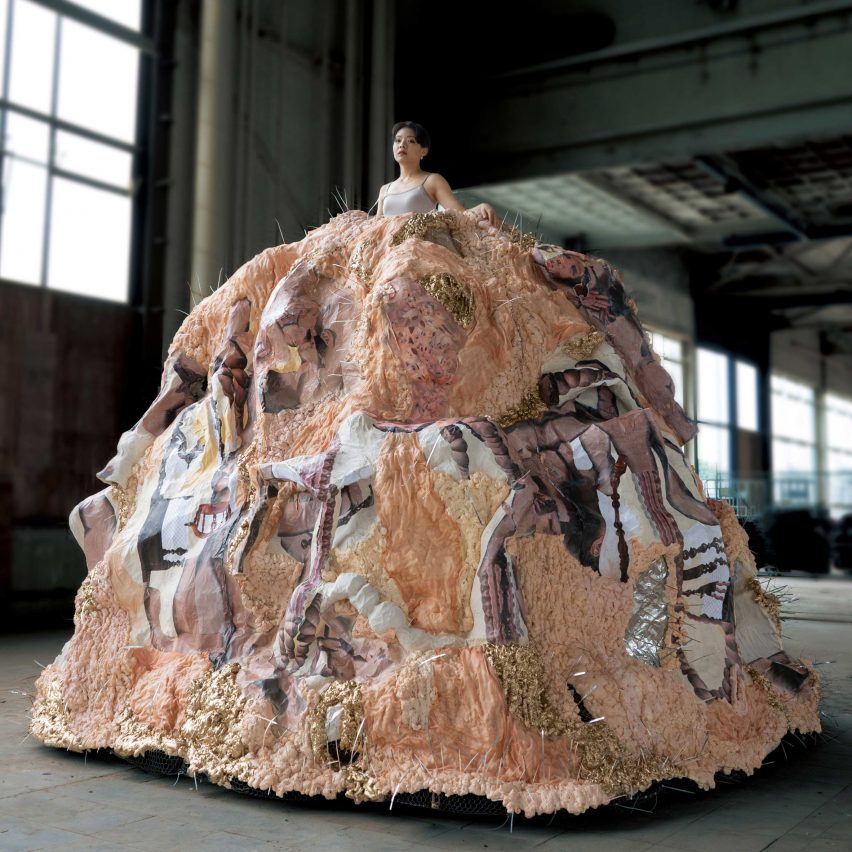
To-be-looked-at-ness by Hsin Min Chan
Design Academy Eindhoven graduate Hsin Min Chan drew on her experiences of 24-hour surveillance in Taiwan when creating the giant To-be-looked-at-ness dress.
As its name suggests, it is intended to make its wearer highly visible and features a structure built from metal mesh covered with papier-mache, plaster, fabric, resin and expanding foam.
Find out more about To-be-looked-at-ness ›
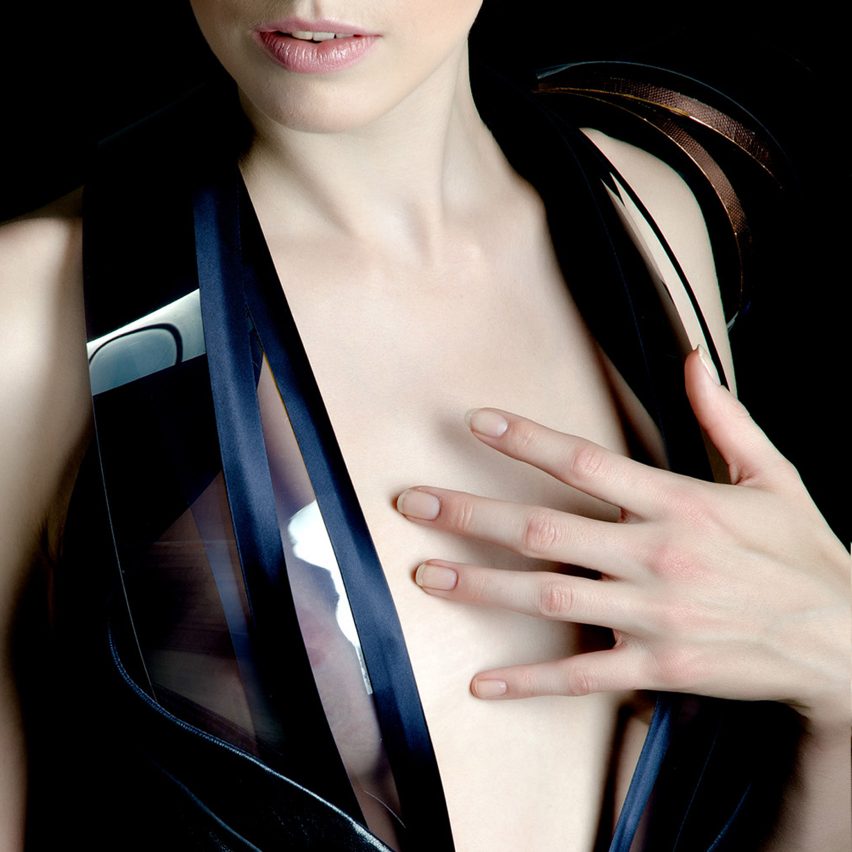
Intimacy 2.0 by Studio Roosegaarde
An increase in heart rate is all it takes for the transparency of this dress to change.
Invented by Dutch designers Studio Roosegaarde and Anouk Wipprecht, the Intimacy 2.0 dress forms part of a clothing collection that marries leather with electrically-sensitive foils that become opaque or transparent when exposed to alterations in voltage.
It was the evolution of the duo's original Intimacy collection, which featured dresses that became transparent when the wearer was approached by another person.
Find out more about Intimacy 2.0 ›
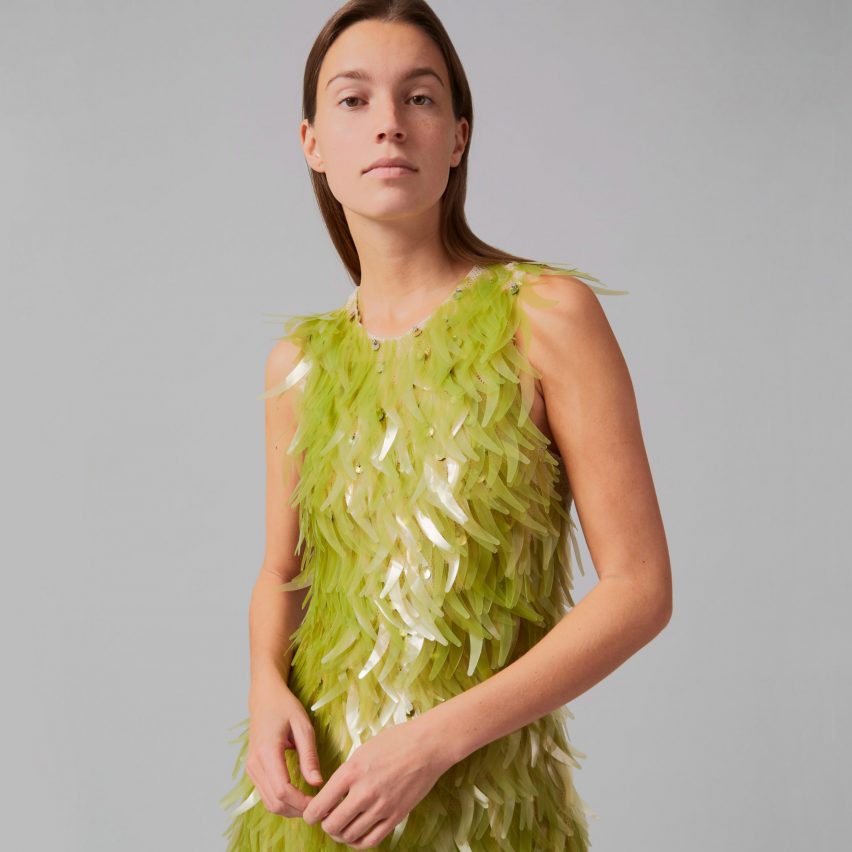
Algae-sequin dress by Phillip Lim and Charlotte McCurdy
The sculptural green sequins layered over this dress are made from pieces of algae bioplastic film, sewn onto a layer of biodegradable plant fibres.
It was fabricated by fashion designer Phillip Lim in collaboration with industrial designer Charlotte McCurdy to challenge the use of polluting crude-oil derivatives in clothing, such as in conventional plastic sequins.
McCurdy told Dezeen that, in order to limit carbon emissions, "we need to be thinking about how to replace the 60 per cent of textiles that are currently made of fossil fuels".
Find out more about the algae-sequin dress ›
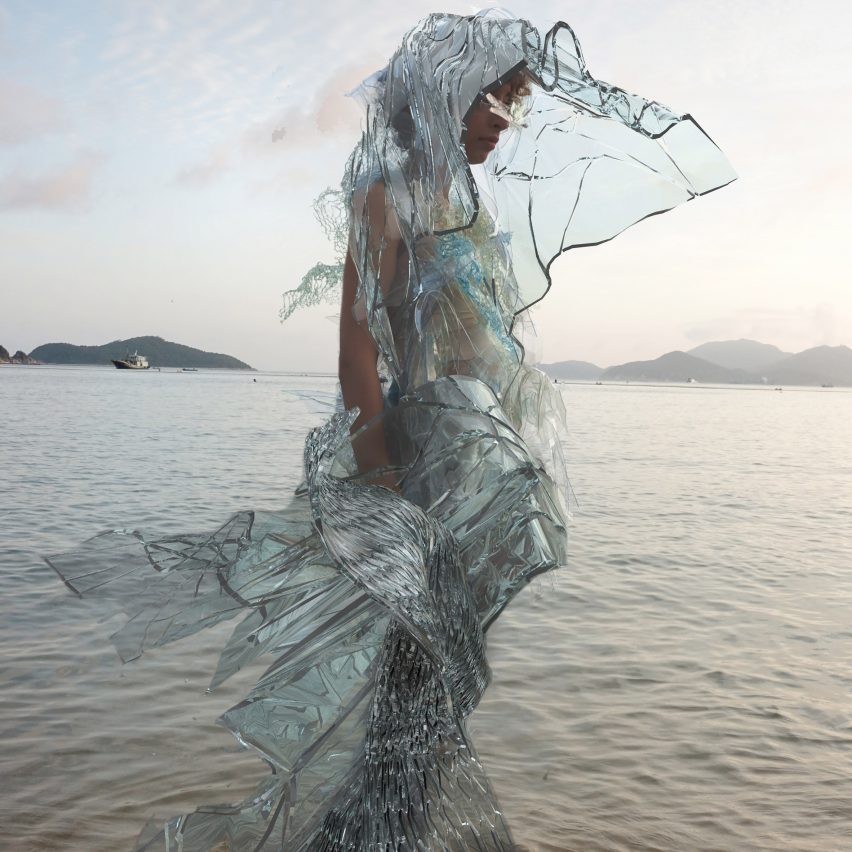
Biodegradable dress by Scarlett Yang
This biodegradable, glass-like dress can crease, shrink and stiffen in response to the climatic conditions of the place in which it is worn.
It was made by Central Saint Martins graduate Scarlett Yang using a mix of water, algae extract and silk cocoon protein – substances that also enable the garment to quickly decompose in water at the end of its life.
According to Yang, it was developed in reaction to the wastefulness of the fashion industry and aims "to challenge audiences' perception of the concept of material life cycles".
Find out more about the biodegradable dress ›
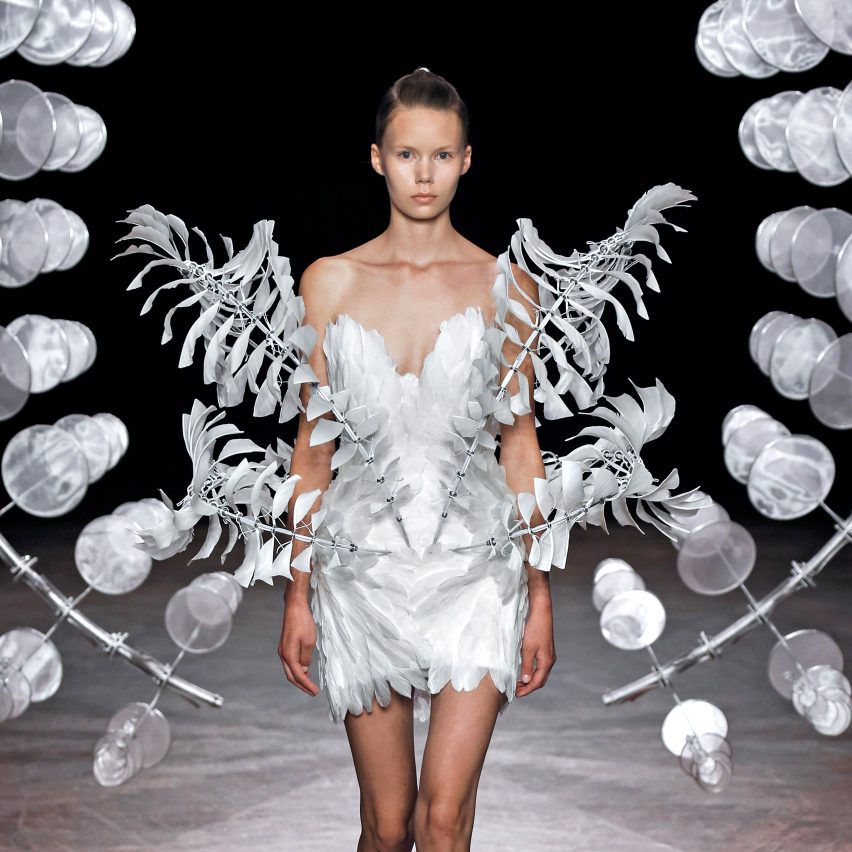
Infinity dress by Iris van Herpen
At Paris Haute Couture week in 2019, fashion designer Iris van Herpen presented a collection of hypnotic, kinetic dresses modelled on the work of artist Anthony Howe and patterns found in nature.
Among them was the Infinity dress, which the designer described as "the most difficult I have ever made".
The short white garment juxtaposed an aluminium and stainless steel skeleton with a layer of white feathers that were rotated by a mechanism hidden in the back.
Find out more about Hypnosis ›

Among the most innovative outfits featured at the 2019 Met Gala in New York was British model Jourdan Dunn's dress developed by fashion designer Zac Posen.
The bespoke gown featured 21 overlapping petals that were all 3D-printed in durable white plastic before being covered in colour-shifting paint. It took more than 1,100 hours to create and each petal was estimated to be worth around $3,000.
Find out more about the rose-petal dress ›
Dezeen is on WeChat!
Click here to read the Chinese version of this article on Dezeen's official WeChat account, where we publish daily architecture and design news and projects in Simplified Chinese.